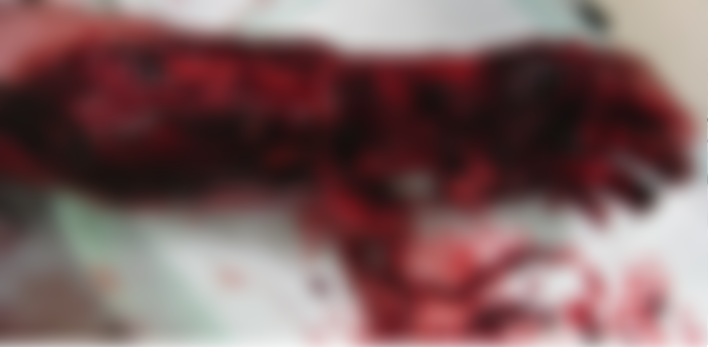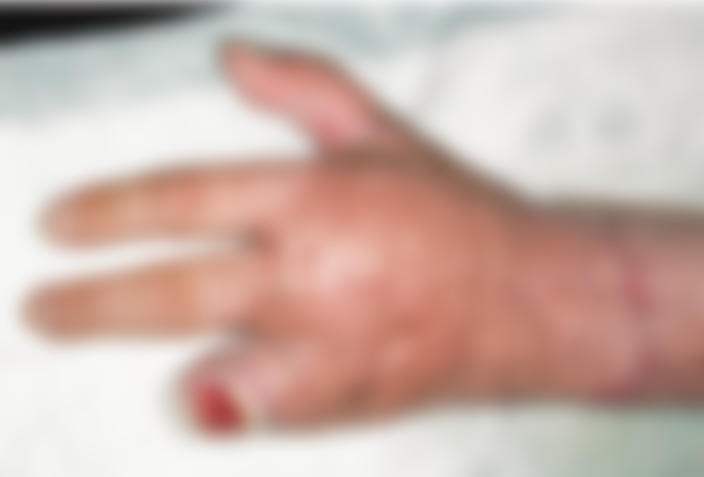Degloving Injuries of Upper Extremity
CASE REPORT
We present a case for a 38 years old male, who tripped on the platform besides the running train.
Immediate investigation and CT scan revealed a large degloving injury of his left hand up to metacarpophalangeal joint and forearm up to the level proximal of the elbow.
The distal phalanx of the left ring finger was amputated at the distal interphalangeal joint, and the tip of the middle finger was partially degloved. In addition, an undisplaced transverse fracture of the first metacarpal bone was present.
A VAC® was applied for five days; i.v. antibiotic treatment was installed as before. After five days, full thickness skin grafts were attached over 70% (Figure 2).

After five days of VAC® treatment of
transplanted meshed full thickness (forearm) and
split thickness skin (at the dorsum of the hand and
fingers) grafts. The difference in the skin quality
between meshed split thickness and full thickness
skin grafts is visible.
Because of a scar contracture and posttraumatic arthrosis of the proximal interphalangeal joint of the ring finger, they performed an arthrodesis of the PIP IV joint of the left (Figure 3).
The patient had contractures at the wrist level of the left hand and admitted non-compliance, returning to our outpatient clinic two months later. After three months of intense hand physiotherapy, the patient demonstrated fist making and extension of the injured hand comparable to the contralateral side.
Credit: Christian Weinand, MD, PhD; University of Magdeburg, Germany

